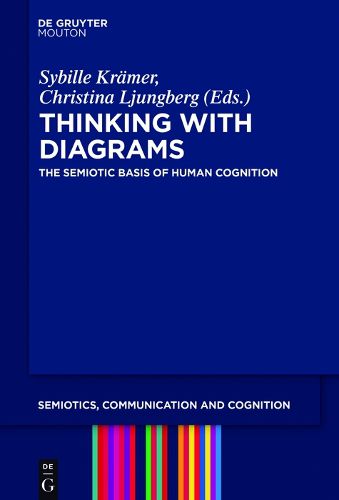Readings Newsletter
Become a Readings Member to make your shopping experience even easier.
Sign in or sign up for free!
You’re not far away from qualifying for FREE standard shipping within Australia
You’ve qualified for FREE standard shipping within Australia
The cart is loading…






This title is printed to order. This book may have been self-published. If so, we cannot guarantee the quality of the content. In the main most books will have gone through the editing process however some may not. We therefore suggest that you be aware of this before ordering this book. If in doubt check either the author or publisher’s details as we are unable to accept any returns unless they are faulty. Please contact us if you have any questions.
Diagrammatic reasoning is crucial for human cognition. It is hard to think of any forms of science or knowledge without the intermediary world of diagrams and diagrammatic representation in thought experiments and/or processes, manifested in forms as divers as notes, tables, schemata, graphs, drawings and maps. Despite their phenomenological and structural-functional differences, these forms of representation share a number of important attributes and epistemic functions. Combining aspects of linguistic and pictorial symbolism, diagrams go beyond the traditional distinction between language and image. They do not only represent, yet intervene in what is represented. Their spatiality, materiality and operativity establish a dynamic tool to exteriorize thinking, thus contributing to the idea of the extended mind. They foster imagination and problem solving, facilitate orientation in knowledge spaces and the discovery of unsuspected relationships.
How can the diagrammatic nature of cognitive and knowledge practices be theorized historically as well as systematically? This is what this volume explores by investigating the semiotic dimension of diagrams as to knowledge, information and reasoning, e.g., the ‘thing-ness’ of diagrams in the history of art, the range of diagrammatic reasoning in logic, mathematics, philosophy and the sciences in general, including the knowledge function of maps.
$9.00 standard shipping within Australia
FREE standard shipping within Australia for orders over $100.00
Express & International shipping calculated at checkout
This title is printed to order. This book may have been self-published. If so, we cannot guarantee the quality of the content. In the main most books will have gone through the editing process however some may not. We therefore suggest that you be aware of this before ordering this book. If in doubt check either the author or publisher’s details as we are unable to accept any returns unless they are faulty. Please contact us if you have any questions.
Diagrammatic reasoning is crucial for human cognition. It is hard to think of any forms of science or knowledge without the intermediary world of diagrams and diagrammatic representation in thought experiments and/or processes, manifested in forms as divers as notes, tables, schemata, graphs, drawings and maps. Despite their phenomenological and structural-functional differences, these forms of representation share a number of important attributes and epistemic functions. Combining aspects of linguistic and pictorial symbolism, diagrams go beyond the traditional distinction between language and image. They do not only represent, yet intervene in what is represented. Their spatiality, materiality and operativity establish a dynamic tool to exteriorize thinking, thus contributing to the idea of the extended mind. They foster imagination and problem solving, facilitate orientation in knowledge spaces and the discovery of unsuspected relationships.
How can the diagrammatic nature of cognitive and knowledge practices be theorized historically as well as systematically? This is what this volume explores by investigating the semiotic dimension of diagrams as to knowledge, information and reasoning, e.g., the ‘thing-ness’ of diagrams in the history of art, the range of diagrammatic reasoning in logic, mathematics, philosophy and the sciences in general, including the knowledge function of maps.